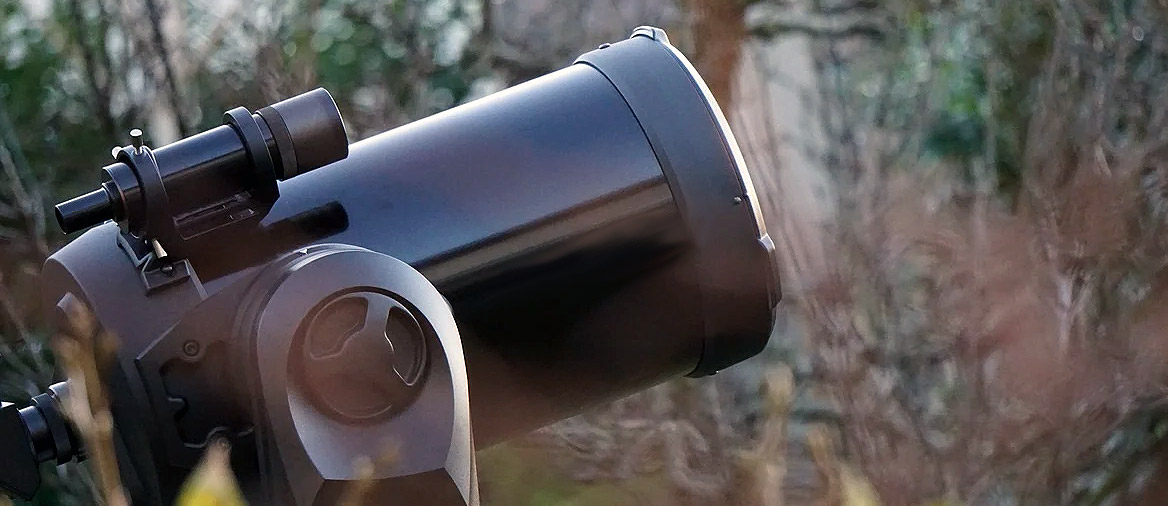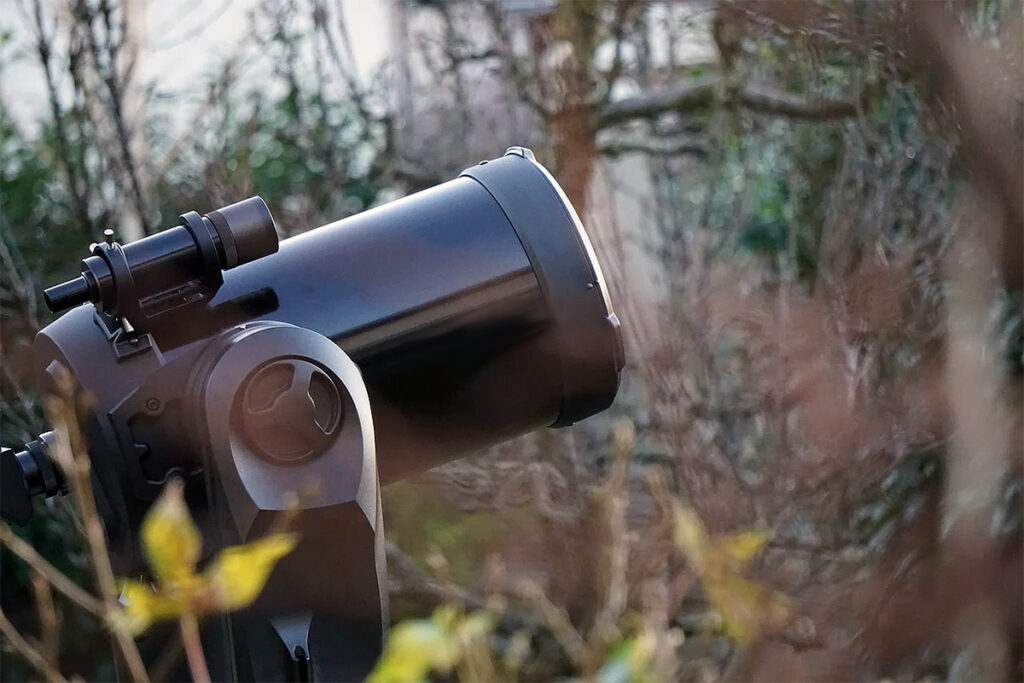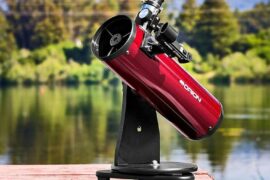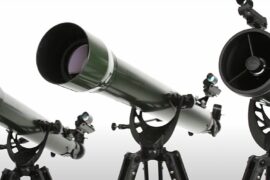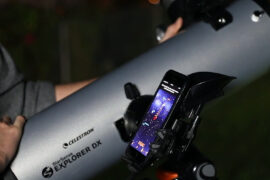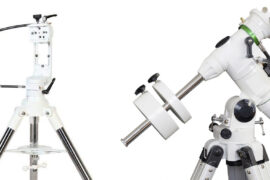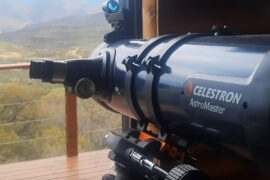Beginner astronomers run into a common question after the first few times they use a new telescope. Where should you keep it when you are done stargazing? Is it ok to simply leave it outdoors?
It is not safe to leave a telescope outside when you are not using it. The major enemies for the longevity of a telescope are moisture, dust, and extreme temperatures (both high and low). Basically, everything that you can find outdoors.
Even if you plan to use the telescope again the following night, you should still bring it inside to its regular storage space and put all the dust caps and covers or store it in its bag if you have one.
If you don’t plan to use it for a while, consider also covering it with an additional light sheet to keep it even more protected. Just make sure it’s a breathable material and not too heavy.
What happens if you leave a telescope outside?
Here are the possible consequences of leaving a telescope outside:
- Morning dew or fog can accumulate in the lenses. If this isn’t properly dried , it can leave permanent spots in the optics.
- Dust can accumulate in the mirrors. It is never recommended to just wipe the mirrors of a telescope as you might leave a scratch.
- Too much heat can weaken the optics glue.
- Too much cold can cause surface damage in the mirrors.
- Bugs can find a new nice and cozy home to build a nest.
On top of that, there are other unexpected risks for telescopes outdoors, like bugs just splatting into the mirrors, unexpected changes of weather, or even theft.
long story short: take good care of your telescope by not leaving it outside.
Does weather (hot or cold) affect a telescope?
A telescope will be fine under most temperatures. Only under very extreme weather, you might want to be careful about using them. Basically, if you can tolerate the weather outside, using a telescope is fine. But what would happen to a telescope in extreme weather?
Too much heat can have the following effects on a telescope:
- The glue in the optic instruments can weaken, messing up the mirror or lense’s alignment, causing optical aberrations and ghosts.
- Both the frames and the mirrors can expand due to thermal expansion. This messes up the quaility of the optics and even though they return to their normal size, over the long term it can cause permanent damage in the delicate mirrors.
- Under extreme circumstances, the mirrors could crack or break.
On the other hand, extreme cold is no better for a telescope, in this case, we are referring to the kind of extreme cold that you wouldn’t be outside for. If it’s a temperature that you can withstand, the telescope will be fine as well:
- Extreme cold can cause ice to form in the mirrors and their edges, leaving permanent spots if the water isn’t properly dried when it melts.
- Higher chance of rain or snow, causing the same effect mentioned above or rusting some of the metallic parts in the mount.
- If the cold is really bad, it probably means the sky is cloudy.Under these conditions you couldn’t even use your telescope to watch the sky, so why even have it there?
Are there any permanent outdoor telescopes?
No. there are currently no telescopes that are specifically designed to stay permanently outdoors. Some brands have tried releasing a few models in the past, but they had to sacrifice too much optics quality so people ended up disliking them and stopped buying them.
This hasn’t stopped people from trying to build piers, covers, and all kinds of DIY solutions to try to keep their telescopes in the backyard 24/7 but in all cases, the results seem questionable and not worth the trouble or the risk of damaging your expensive telescope.
Ideal telescope storage conditions
Telescopes are better kept in dry places at room temperature. The garage or a shed are fine as long as there isn’t too much humidity, vapor, or smoke.
After using a telescope and bringing it inside, let it dry for a bit (no need to wipe it) before putting the dust caps. Condensation can form in the mirrors with the temperature change from the cold outside, so the mirrors need to dry properly.
Always put the telescope’s covers or use a sheet if you don’t have a cover. If you have a telescope bag, you can also keep it there if you don’t mind disassembling it and assembling it often.
Keeping your telescope under these conditions can seem like a bit of work, but it will increase its lifespan and keep its value in case you want to sell it in the future when you are looking to upgrade.
Summary
- It is not a good idea to leave a telescope outside overnight.
- Dust, dew, moisture, and bugs can damage your telescope.
- Always store your telescope properly after using it.
Enjoyed this article?
Get daily 10-minute PDFs about astronomy to read before bed!
Sign up for our upcoming micro-learning service where you will learn something new about space and beyond every day while winding down.

